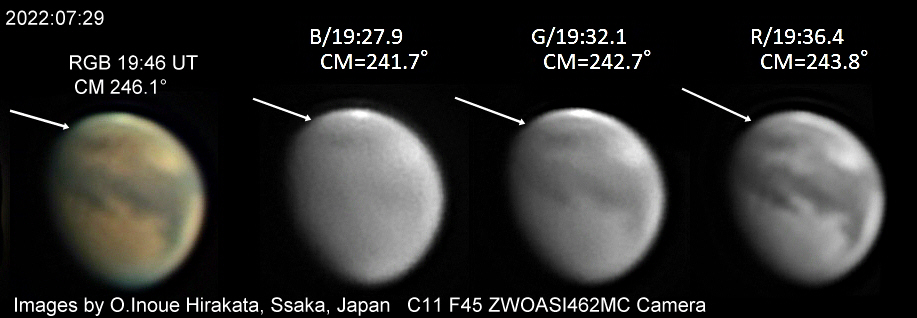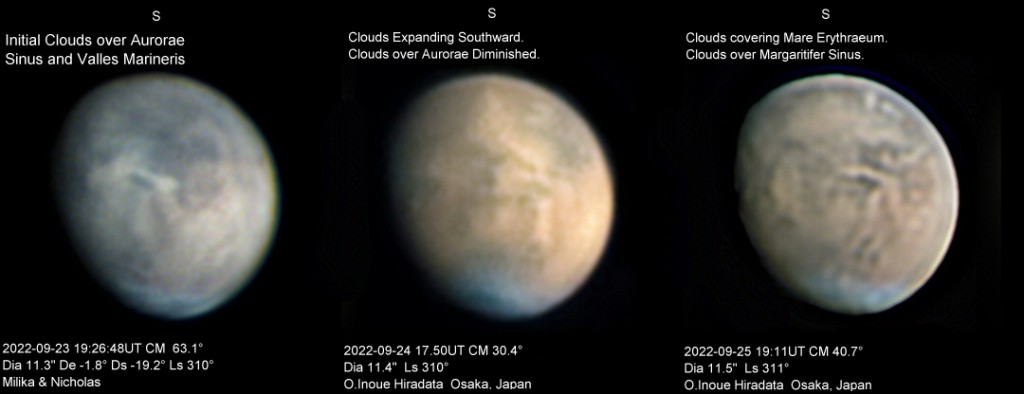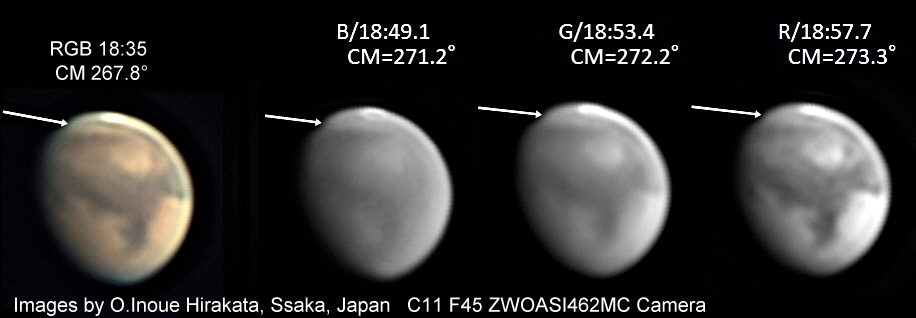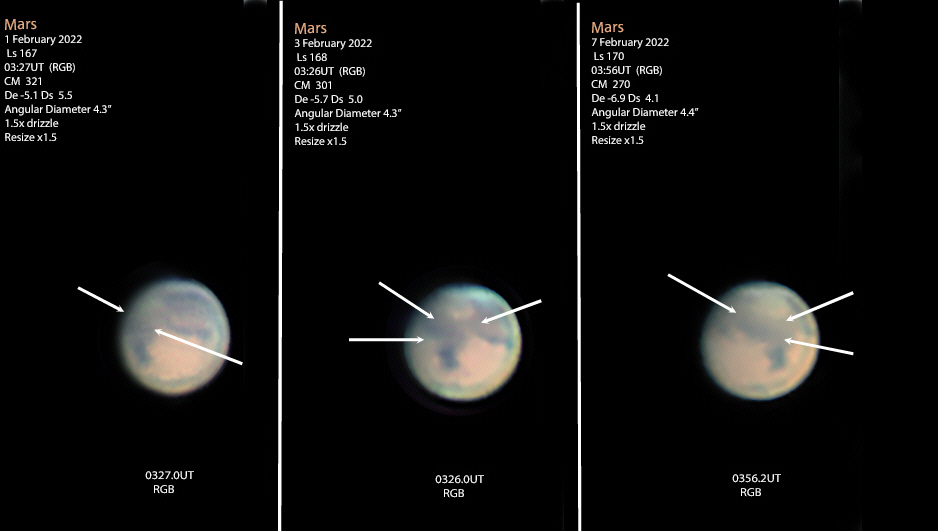2022-2023 Featured Observations
 The 2022-2023 Mars apparition is underway! Be sure to check here for updates and examples of observations from your fellow observers. You can send your images and sketches to Mars@alpo-astronomy.org for inclusion in our online gallery and review by the section coordinators (please do follow the file naming guidelines when doing so.)
The 2022-2023 Mars apparition is underway! Be sure to check here for updates and examples of observations from your fellow observers. You can send your images and sketches to Mars@alpo-astronomy.org for inclusion in our online gallery and review by the section coordinators (please do follow the file naming guidelines when doing so.)
Ice Storms Near Syrtis Minor
Mars shows what looks like the South Polar Cap in the middle of Summer!
A large expanse of a bright white feature dominates the South Polar Regions. The white polar region of the 2022-10-05 color image was produced by combining the red- image, green-image and blue image. To produce the white color requires each filter to be strong in the polar region and they are. This indicates there is ice on the ground. However, note that the blue image and green images of the Southwestern limb of the 2022-10-07 color image are strong but the red image is weak. This indicates deep layers of ice crystals, an icy fog.
Late September Regional Dust Storm
Early dust clouds observed on September 23, 2022. See below for images.
As of September 30, 2022 dust clouds spread Eastward as far as Hellas in the Southern hemisphere
and Ismenia Lacus in the Northern hemisphere.
Stable Ground Ice North of the South Polar Cap
Two image montages dated 2022-07-25 and 2022-07-29 below provide evidence for ground ice and snowfall. Arrows point to the ice-feature for the blue, green and red filters. The red filter image carries the most weight for ice on the ground. If the feature was a cloud, it would not be be present or only weakly present with a red filter. Over the four-day period the ice was stable and did not sublime. The source could be snowfall providing enough depth to be stable. A polar cold front was imaged at the feature’s location a week before the ground ice was imaged. If the feature was frost then sunlight probably would be enough for sublimation.
July 25, 2022
July 29, 2022

Dust Brightens Dark Markings
Dark features including Mare Hadriacum, Ionium, Iapygia, Yaonis Regio, and Hellespontus are only faintly visible in Clyde Foster’s Febriary 01, 03 and 07 images below. Arrows point to these features. Airborne dust is also normally tan colored in color balanced images. However it is proposed that there is dust is on the ground that is brightening the normally dark features. Next see a montage of his April 01, 02 and 03 images. Arrows point to the same regions and once again show the tan color. However there are no notable changes over a two-month period that suggests at least a semi-permanent ground cover of dust. There may have been recent dust clouds that settled out over these areas.
Images by Claude Foster
Images by Claude Foster










